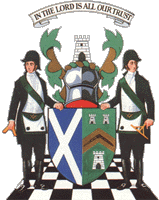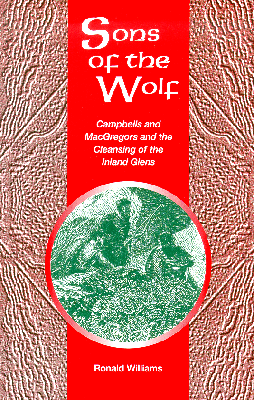


| Review | 
|
Scottish history is turbulent and violent, as it is complex. One author has described it as 'The 1000 year brawl'. The small book, 99 pages, provides an insight to one aspect of that history: inter - Clan rivalry.

The book is an excellent introduction to the understanding of the Celtic Clan system and its eventual collapse under the forces of 'Scottish' feudalism. It tells a tale of two Clans, Clan MacGregor (Sons of the Wolf or Children of the Mist), that held land in the old way (by sword right, immemorial possession and hereditary right) and Clan Campbell. The latter opportunistically embraced the new way of holding, and acquiring, land by written contract. The author explains, in a clear and simple manner, how the two systems of land ownership interacted and details the conflicts that arose because of the two largely incompatible systems. Herein lay the seeds of centuries of violence.
Ronald Williams writes with a style that conveys historical fact as well as the romance of Scotland. This 'blend' is reflected in the opening paragraph, which reads:
"Kilcurn Castle stands on a green promontory at the northern end of Loch Awe, sentinel over the land where the three glens meet, and watched over by the peaks of Ben Cruachan. The building is ruinous and unpeopled now, the floors grass-grown and its halls open to the wind and sky, but its size and position attest to the power and ambition of the Campbell lords who built it, and who ruled and oppressed the people of the inland glens over which they claimed superiority".
The author details the origin of Clan Campbell from Irish roots and their power base at Innischonnel at the southern end of Loch Awe. He charts the Clan support of Sir William Wallace and Robert I (Robert the Bruce) and the wealth and power that flowed from that support. Interspersed with this account of the Campbells is a description of the fortunes of the MacGregors and their associated Clans (McNabs, MacKinnons, Grants etc.). The various intrigues, plots, ambushes and murders make fascinating reading. The account ends with the loss of the MacGregor's lands and influence in the early 17th century. 'The Band and Statutes of Iona' was signed, under duress by most of the Highland Chiefs which was, "The special cause of great misery, barbarity and poverty… Chieftain's households were to be reduced in size and firearms were prohibited… Bards were to be put in the stocks as common thieves and likewise driven from the country. Every highland gentleman was to send his eldest son to be educated in the lowlands and the Gaelic language was banned from schools".
There is no doubt that this small book provides an excellent introduction to the understanding of the history of the Scottish Highlands. Footnotes are provided and these, together with a short Bibliography, offer scope for the interested reader to learn more. There is, however, a Masonic interest also which is not immediately obvious.
Ronald Williams, very thoughtfully, provides a map of the west of Scotland that displays the areas occupied by the various clans. Campbell territory lies on the south bank of Loch Awe (Argyll) with the north (Lorne) occupied by the MacDougall Clan. To the northeastern end of Loch Awe is the MacGregor Clan. The latter supported Edward I and II of England and this eclipsed their earlier support for Sir William Wallace. As the author states: "The MacGregors demonstrated an unfortunate talent for picking a losing side".
What is very surprising is that in all the information that exists from these turbulent times is the fact that nothing is mentioned, anywhere, of the arrival of a fleet of ships carrying Knights Templar fleeing from France. The arrival of such a group would have been mentioned by their 'enemies' (supporters of Edward I and II), if not their friends, yet there is nothing in English documents of such an 'arrival'. This is even more significant when one realises that the men of Lorne were sending regular intelligence reports to England throughout this period. Clan Campbell who supported Robert I owned land around Loch Awe, Argyll, where the Knights Templar allegedly landed. These 'natural supporters' of the fugitive Knights leave no record of their arrival in their territory. Yet rise of Clan Campbell can be traced from their support of Robert I.
For such a small book Ronald William provides a great deal of information. Well written in an easy to read style I would recommend this book to anyone who has an interest in Scotland and Scottish history. My one regret is that book is not illustrated, other than the map. The author has written two other books of which I am aware:
The Lords of the Isles
(The Clan Donald and the Early Kingdom of the Scots)
The Heather and the Gale
(Clan Donald and Clan Campbell during the Wars of Montrose)
I hope to provide a review of these also in the future.
